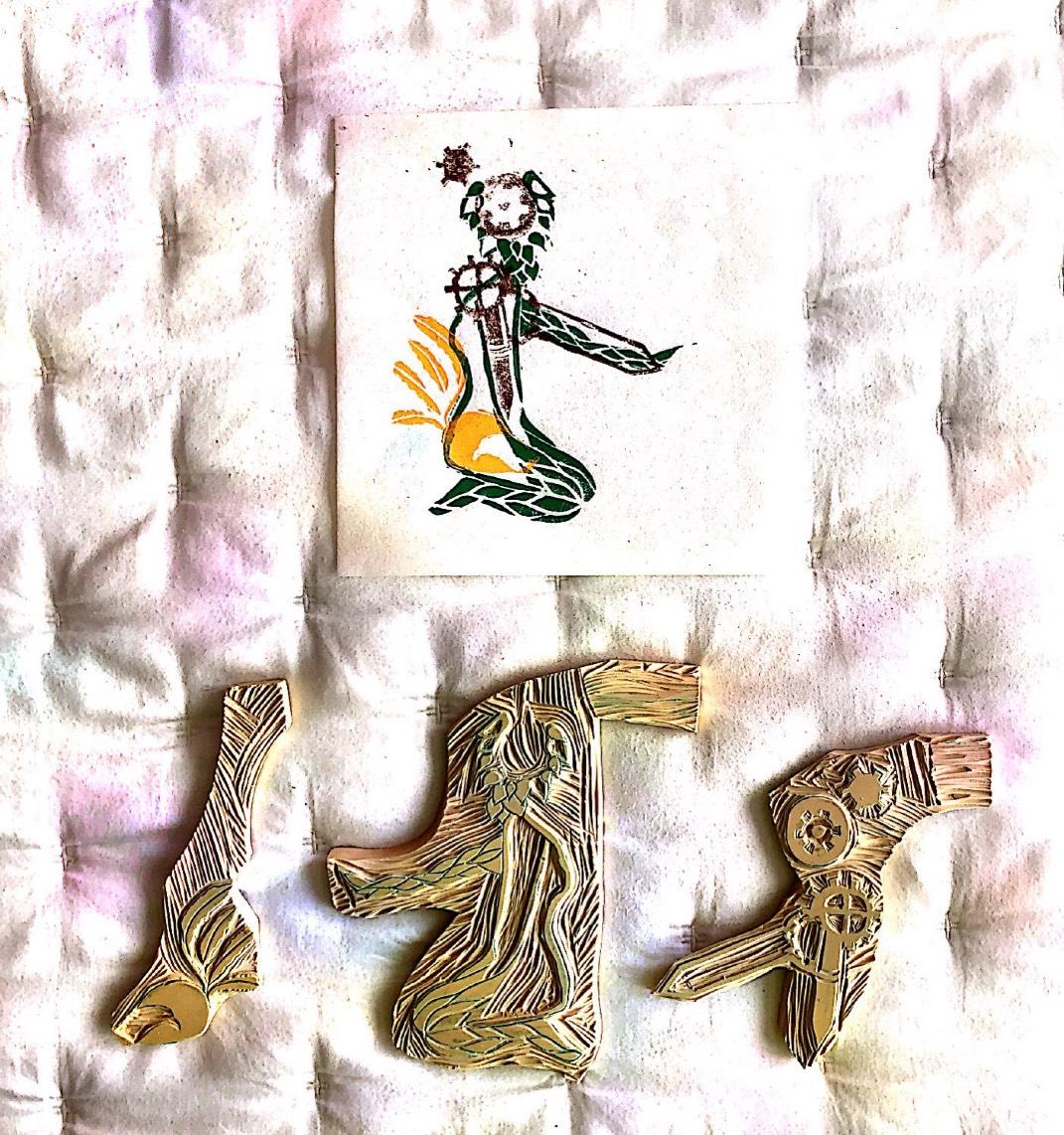
3 minute read
Louisa Goltry
Untitled (2020) Medium Untitled (2020) Medium
Cosmology of Self
EZ Cut Block, ink, rice paper [17.5 x 17.5 cm]
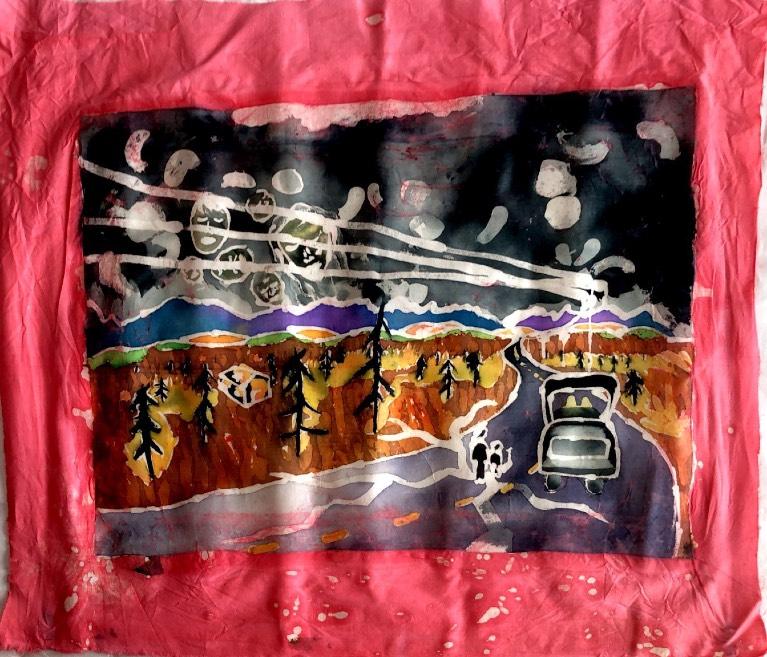
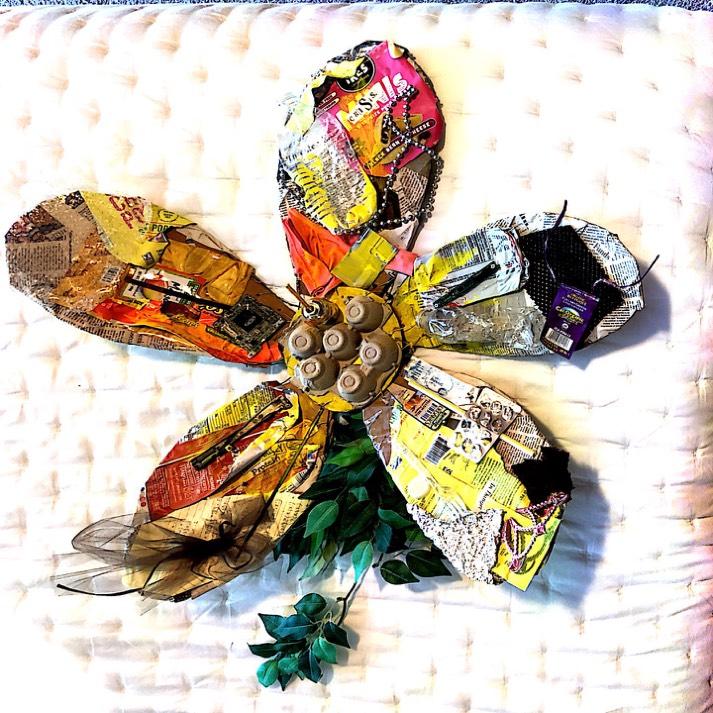
Scouring the Static
Cloth, dye, wax [60 x 70 cm]
“This piece was influenced wildfires in the United States at the time I made it. I explored the dramatic role that natural disasters play in determining our fate through a contrasting color scheme and techniques that created a crackle effect in my final product. The leading lines I created with a wax resist process communicate destruction in unison with reconstruction.”
Decapitated Flower
Newspaper, recycled plastic, egg carton, glue, tape, wire, cardboard, ribbons, plastic tiara, plastic leaves, plastic water bottle, bubble wrap, tinfoil, straws, aluminum cans, foam, lightbulb, computer chips [65 x 65 cm]
“This piece allowed me to explore using a wire armature to display the pluralist identity of people in natural and industrial spheres. This piece built thematically off of the batik I made, but collaging found objects and recyclables forced me to engage with the concept of chaos in a 3D form. The five conservation principles of “refusing, reducing, reusing, rotting, and recycling” waste informed the shape and design of my piece.”
400 Million Fetuses
Photopaper [20 x 30 cm]
“This installation refers to the one-child policy in China from 1979-2015. The imagery of boiled eggs is a reference to the disproportionate number of female births prevented by the policy, providing a discourse on the role that gender plays in defining our reality within our global and cultural context. I turned to Marcel Broodthaers style of personifying discomfort through his asymmetrical installations as inspiration for my piece.”
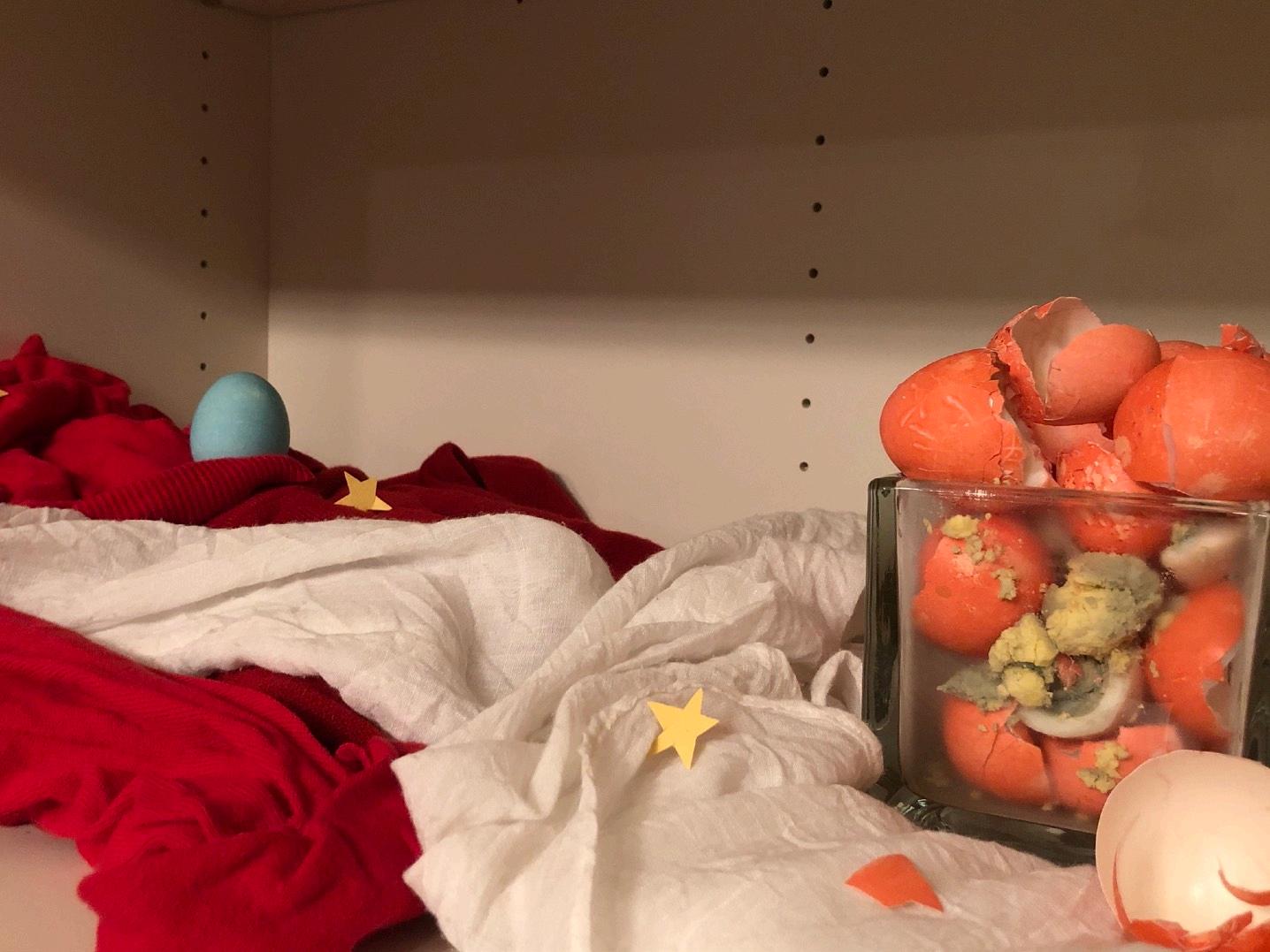

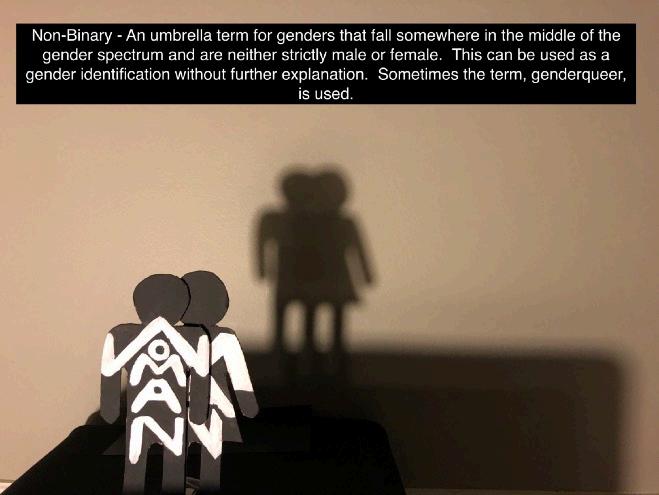
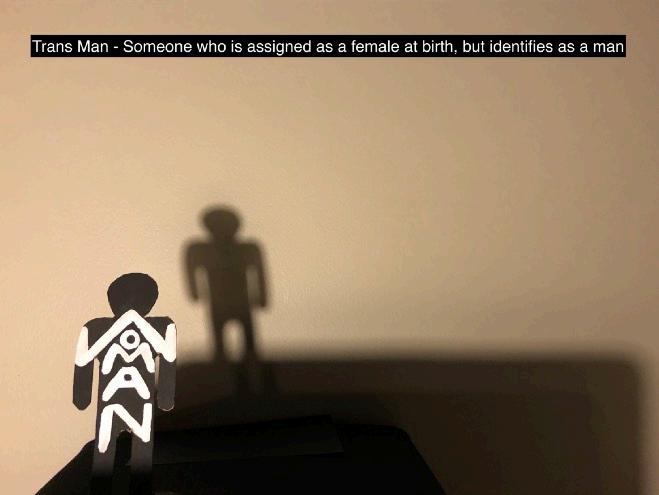
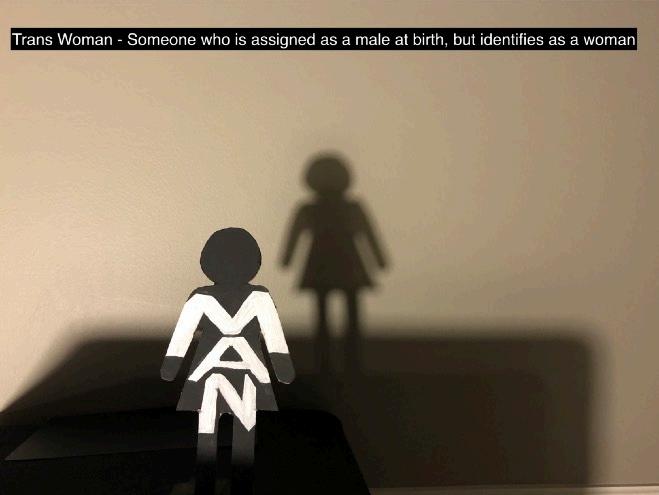
Shadowy Perception
Photopaper [20 x 30 cm]
“After viewing Kumi Yamashita’s shadow art in a museum, I felt inclined to use the techniques of shadow art to encapsulate individual agency over one’s identity and gender identity in particular. I used a single light source to create a series of images composed not only of solid shapes but also by the silhouette of their shadow. The prominence of the shadow changed depending on how far objects were from the light, and I maintained a set distance in each photo in order to convey unity.”
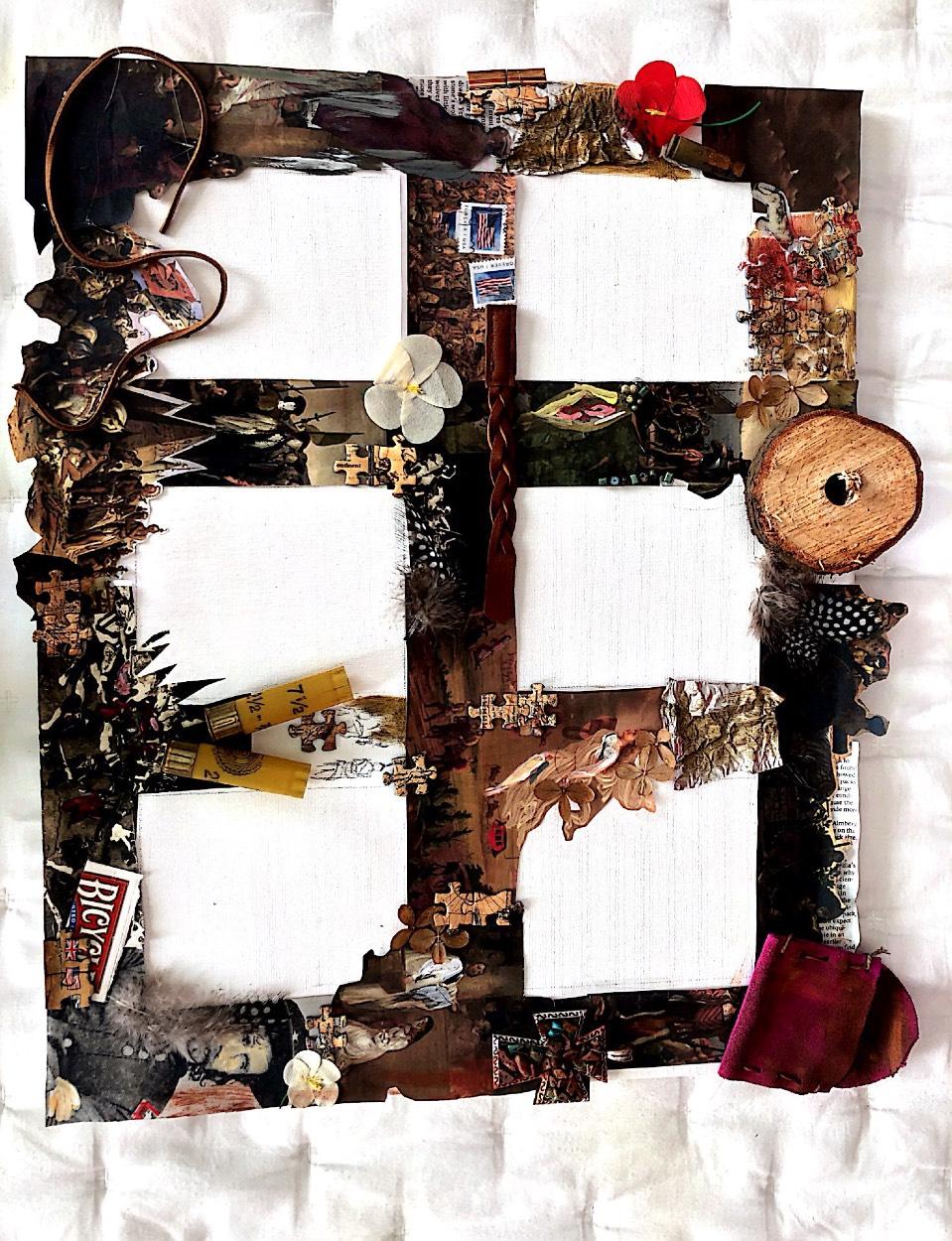
Last Stand
Wood, fabric, leather, feathers, aluminum, acrylic paint, graphite, bullet shells, puzzle pieces, tissue paper, playing cards [50 x 40 cm]
“This piece is a continuation of my experimentation with white space in my body of work, where the subject matter is pictured in the margins between blank canvas space. The collaged depictions of Native American history I used…have many dark values and tones, accentuating the contrast with white spaces. The incomplete narratives about people offered by history surfaces in this piece and I incorporated texture as a means to free these narratives from a fixed state.”
Bibliography of artists used in this collage: William H. Powell. (1855). Discovery of the Mississippi by De Soto. [Oil on canvas.] John Gadsby Chapman. (1840). Baptism of Pocohontas. [Oil on canvas]. John Vanderlyn. (1847). Landing of Columbus. [Oil on canvas]. Cassily Adams. (1896). Custer’s last fight. [Colored lithograph]. Fritz Scholder (1976). American Landscape. [Lithograph on paper]. John Gast. (1872). American Progress. [Chromolithograph].
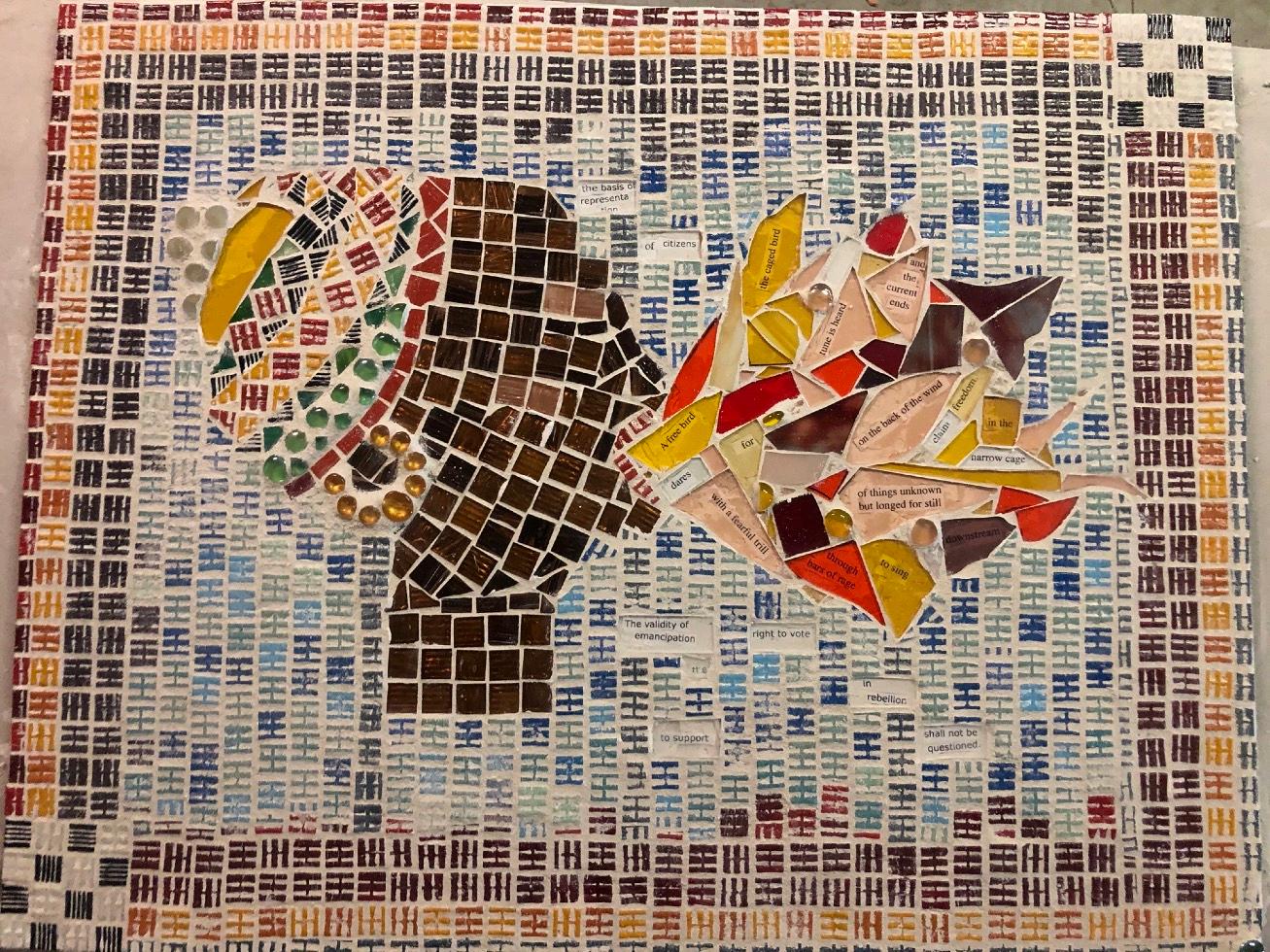
Caged Bird
Grout, adhesive, glass, paper [60 x 75 cm]
“Consciousness of history is a factor of self-identity. I sought to unpack this idea in relation to my theme through a mosaic because assembling individual pieces of glass into a cohesive pattern developed the aspect of collectivism that relates to my theme. I incorporated excerpts from Maya Angelou’s poem, Caged Bird, and the 14th Amendment to deepen the audience’s interaction with the piece and reflect on the ways words and visuals can complement one another in art.”










